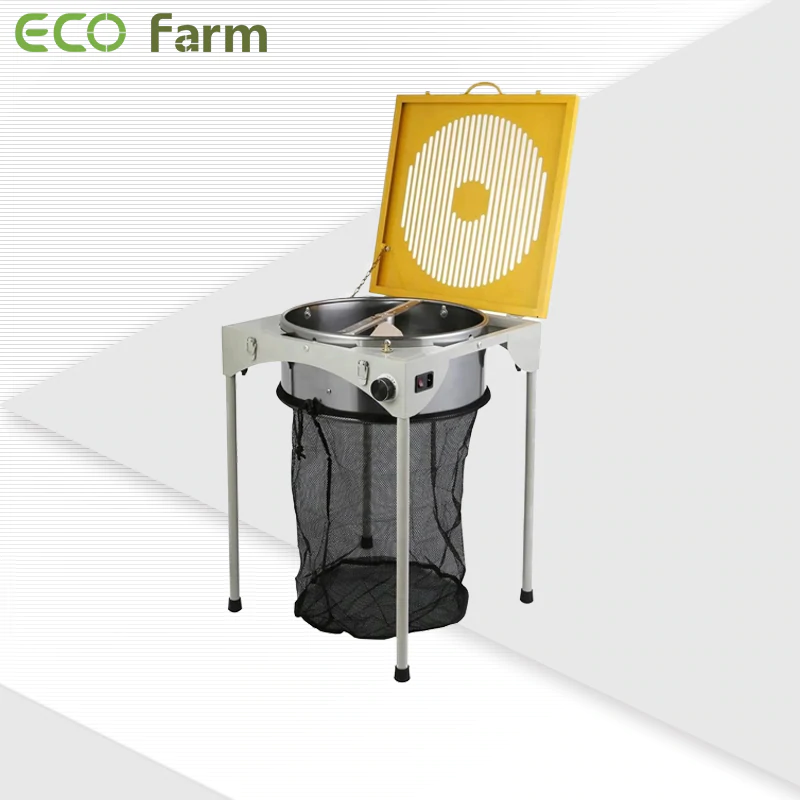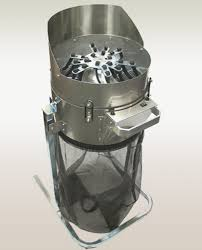- Home
- SHOP ECO FARM
-
TOP BRANDS
-
Grow Lights Brands
- Adjust-A-Wing
- Apollo Horticulture
- Bestva
- Black Dog LED
- California Lightworks
- ChilLED Grow Light
- Eco Farm
- HLG - Horticulture Lighting Group
- Kingled
- Kind LED
- Mars Hydro
- Morsen
- Neilo
- NextLight
- Phlizon
- PlatinumLed
- Roleadro
- Optic LED Grow Lights
- ViparSpectra
- Vivosun
- EYE Hortilux
- IPOWER
- NanoLux
- Phantom grow light
- Gavita grow lights
- Grower's Choice
- Lumatek
- Maxibright
- Yearld Pro
- ThinkGrow
- Crecer Lighting
- Green Sunshine Electric Sky
- fohse aries
- loriflux
- luxx
- fluence
- iluminar
- Lex
- LTC
- Rayonled
- FGI
- PHOTONTEK
- Grow Tents & Kits Brands
- Extraction & Harvest Brands
- Climate Control & Hydroponic Brands
-
Grow Lights Brands
- COMPANY INFO
- COOPERATE WITH US
- Blog
- Sign in
- Home
-
SHOP ECO FARM
- ECO Farm Grow Lights
- ECO Farm LED Grow Lights
- ECO Farm Quantum Board
- ECO Farm Samsung LED Grow Lights
- ECO Farm COB Grow Lights
- ECO Farm Commercial Lights
- ECO Farm Supplemental Grow Light
- ECO Farm Fluorescent grow lights
- ECO Farm HPS & MH Grow Lights
- ECO Farm CMH Grow Lights
- ECO Farm HID/CMH Bulbs & Ballasts
- ECO Farm Grow Tents & Kits
- ECO Farm 2x2ft Grow Kits
- ECO Farm 3x3ft Grow Kits
- ECO Farm 3.3x3.3ft Grow Kits
- ECO Farm 4x4ft Grow Kits
- ECO Farm 5x5ft Grow Kits
- ECO Farm Grow Tent - Standard Style
- ECO Farm Grow Tent - Extension & Roof & Lodge Style
- ECO Farm Extraction & Harvest
- ECO Farm Rosin Press Machine
- ECO Farm Dry & Wet Trimmers
- ECO Farm Oil Accessories
- ECO Farm Medicinal Plants Grinder
- ECO Farm Medicinal Plants Containers
- ECO Farm Medicinal Plants Dryer
- ECO Farm Refrigeration Dryer
- ECO Farm Climate Control & Other Accessories
- ECO Farm Inline Duct Fans
- ECO Farm Oscillating Fans
- ECO Farm Exhaust Fans
- ECO Farm Air Filter
- ECO Farm Duct Muffler
- ECO Farm Ventilation Kits
- ECO Farm Plant Humidifiers
- ECO Farm Plant Dehumidifiers
- ECO Farm Hydroponic Accessories
- ECO Farm Other Accessories
- ECO Farm Hydroponics Microscopes
-
TOP BRANDS
- Grow Lights Brands
- Adjust-A-Wing
- Apollo Horticulture
- Bestva
- Black Dog LED
- California Lightworks
- ChilLED Grow Light
- Eco Farm
- HLG - Horticulture Lighting Group
- Kingled
- Kind LED
- Mars Hydro
- Morsen
- Neilo
- NextLight
- Phlizon
- PlatinumLed
- Roleadro
- Optic LED Grow Lights
- ViparSpectra
- Vivosun
- EYE Hortilux
- IPOWER
- NanoLux
- Phantom grow light
- Gavita grow lights
- Grower's Choice
- Lumatek
- Maxibright
- Yearld Pro
- ThinkGrow
- Crecer Lighting
- Green Sunshine Electric Sky
- fohse aries
- loriflux
- luxx
- fluence
- iluminar
- Lex
- LTC
- Rayonled
- FGI
- PHOTONTEK
- Grow Tents & Kits Brands
- Apollo Horticulture
- Black Box
- CoolGrows
- Eco Farm
- GrowLab
- Gorilla Grow Tents
- Mars Hydro
- Quictent
- Secret Jardin
- Unit Farm
- TopoGrow
- VIVOSUN
- Topolite
-
COMPANY INFO
-
COOPERATE WITH US
- Blog
ECO Farm 18inch Table Automatic Leaf Trimmer Machine VS Pro-Cut Fast Leaf Trimmer
April 14, 2022
How many plants can a trimmer handle in a day? What about damage to the buds? Do I have to trim the buds by hand? Today we review bud trimmers for your indoor plants. Find one that is right for your crop. Keep reading!
Post Harvest Trimming
Once your plant’s trichomes have properly developed, it’s time to harvest. While flowering is the final phase of the plant’s lifecycle, your work is far from over. Proper post-harvest trimming techniques ensure buds are ready to consume and little goes to waste. The different trimming techniques have advantages and disadvantages; the final decision is ultimately up to the grower. Any experienced trim team will have the experience and resources to hand or dry trim while the plants is dry or wet.
Hand Trimming
There’s no substitution for hand trimming. Handling each individual bud allows the trimmer to perform a higher level of precision, preserve as many trichomes as possible, and is more environmentally friendly than using machines.
Hand-trimmed buds are more valuable in today’s craft plants market. Consumers appreciate the attention to detail and preservation of each bud’s natural beauty achieved by hand trimming.
Machine Trimming
Utilizing technology over manual labor also has advantages. For large grows, trimming every bud may not be an option. Machine trimmers can process plants at an exponentially higher rate than a plants trim team. Using a machine trimmer makes sense for large operations, but the buds will become more uniform, and more flower is wasted.
Dry Vs. Wet Trimming
Deciding when to trim is entirely up to the grower. Everyone has their own preference, and there are advantages to trimming flower immediately vs. letting it dry out first.
Wet trimming is much easier and saves time but gets messy. When plant is fresh, the leaves stick out, making them easier to cut; however, the buds are still we and can be very sticky. The disadvantage to wet trimming is a potential reduction in quality. The outer leaves retain moisture in the drying process; the buds can get dried out prematurely when they are removed.
Dry trimming takes more time but can produce higher quality bud. Allowing buds to dry retains moisture and creates a more enjoyable consistency. The dry trimmed flower usually has a better taste and more colorful buds.
ECO Farm 18inch Table Automatic Leaf Trimmer Machine

Features:
This ECO Farm Bud Trimmer is a great device for trimming and shaping flowers, buds and spices. This powerful trimmer features a maintenance-free motor and sharp stainless steel (3) blades. Automatic output when finished, it comes with a clean and environmentally friendly tote bag; No litter left behind. It trims excess leaves and stems quickly, efficiently and preciously. Easily foldable design for easy transport or storage. And the speed of this bud trimmer is adjustable. High-speed blades and fans trim spin, fluff, and ultimately eject trimmed plants.

Features:
Don’t spend hours raking leaves when the Pro-Cut Leaf Trimmer can rip through those piles in no time. They are very economical and very quiet! They separate excess leaves and branches from various plants and flowers. Pro-Cut prunes plants and small shrubs such as oregano basil, rosemary, mint, lavender, coriander and parsley for the preparation of potpourri for essential oil aromatherapy and mixed flowers. Replacement parts are also available for your Pro-Cut.
6 pro tips for trimming Plants
In the end, whichever approach you choose, excellence is on the horizon. Your decision depends on your environment, space and time restrictions, and preferences.
Whatever you do, these tips transform the process from efficient to super-efficient. They can turn even absolute amateurs into plants trimming pros in no time.
1. Cut the plant and branches first
Learning how to trim buds one by one becomes much easier when you minimize the bulk on the get-go.
Cut the plant off the base, remove individual branches, and work on them one by one, removing and manicuring the buds. Plus, plant segmentation makes the task much less demanding when it comes to space.
2. Remove fan leaves right away
No matter whether you’re going for a wet or dry trim, there’s some work to be done immediately after harvest.
Cut off large bladed fan leaves right away. Doing so lets your plant dry in half the time and reduces the branch bulk before you.
3. Keep several separate piles
Each part of the branch you’re cutting has a different future use. If you let everything drop beneath your seat, you’ll never manage to separate fan leaves from the stalks.
Instead of letting the mess accumulate, dedicate your tray to the buds themselves and separate different parts of your plant.
4. Don’t waste the trim
While you’re trimming plants, you’ll end up with heaps of foliage and stems lying around. A good stoner is a sustainable stoner, and nothing should go to waste.
Leaves are perfect for tea, butter, or kief. You can even use stems for cooking and making extracts, from hash to topicals.
5. Keep rubbing alcohol and extra scissors
Trimming plants gets gluey. You’ll want to keep your scissors sharp to avoid giving up on your latest bunch of buds.
An expert trimmer has both cleaning supplies and an extra pair of scissors on hand. That way, you have to wipe only half as often. You’ll stay in the groove, too.
Sharpen everything before you get cutting for bonus points.
6. Save the scissor hash
Scissor or finger hash is the resin that collects on your tools and hands while you’re going at it. It might not sound delicious, but it is.
Don’t dispose of it. It’s valuable smokable material that you can collect and store somewhere for a quick hit.
Conclusion
Whichever process of trimming plants you choose, you’ve made the first step towards the colas of your dreams. Use this guide for the basics and build on your skills until it becomes second nature.
It takes a bit of practice, but you’ll revel in the results. Two harvests from now, your grower friends will be coming to you for a lesson on how to trim plants.
Stay tuned to our blog for more handy guides such as this one. Our educational resources are here to help plants farmers every step of the way, ensuring the highest quality plants in gardens across the country.
Leave a comment
Also in News

What are the best LED grow lights to use in a grow tent?
June 27, 2024
When choosing Best LED Grow Lights, you should also consider the durability of the lamp, energy efficiency and whether it can meet the light needs of specific plants. For example, the LED plant growth lights provided by Philips Lighting are designed for specific crops to promote uniform growth and improve quality and yield.

Can I use normal led lights to grow plants indoors?
June 20, 2024

What's the best indoor LED growing light on Amazon USA?
June 15, 2024
On Amazon, hot growth light types include LED Growing Lights, which have a variety of functions and features such as automatic on/off timing, red and blue LED light combinations, multiple dimmable modes, and flexibility for indoor potted plants or indoor gardens.
